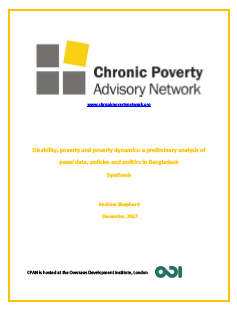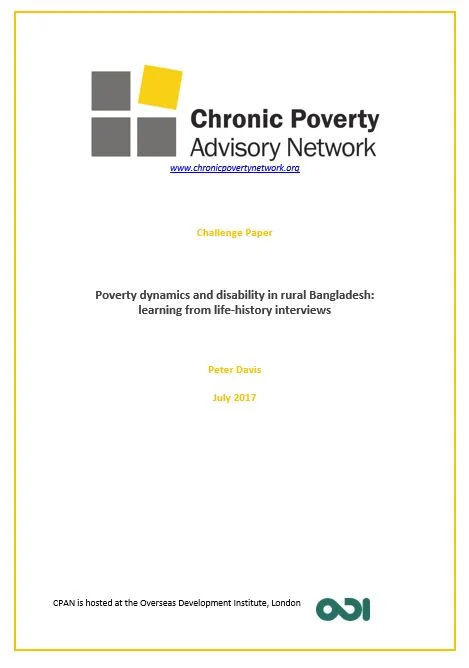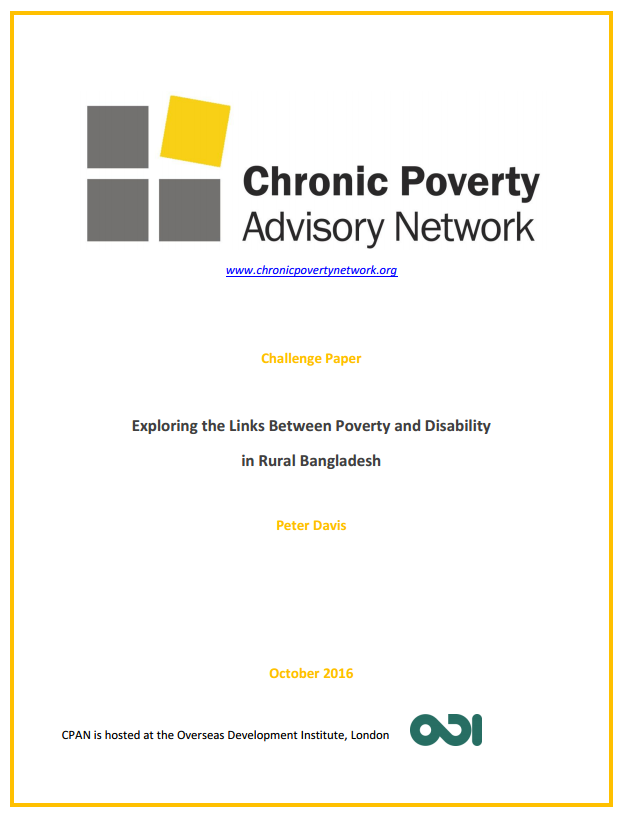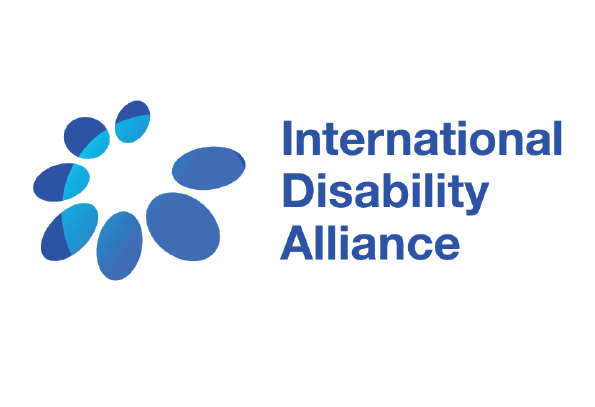Currently there is little evidence about the relationship between disability and ‘poverty dynamics’; or movements of people across, or a failure to cross, the poverty line. At the current times, it is therefore difficult to answer the question “what difference does disability makes to poverty dynamics? What are the policy implications of this? In addition, what is the impact on the political and other conditions and processes that influence the outcomes experienced by households, which include persons with disabilities? Consequently, what data is needed to illuminate the wellbeing of poor or vulnerable households, which include persons with disabilities?”
This pilot project, entirely focused on the Bangladesh case, aims to answer these questions. Its overall objective is to provide policy makers at national and global levels with an initial idea of what can be learnt about the relationship between disability and poverty dynamics; and to draw out the policy implications on data collection, both nationally and internationally.
The project methodology will include an analysis on available panel and other household survey data, as well as a policy analysis, which aim to produce recommendations to feed in the discussion and develop a set of publications.
See here the Executive Summary of the Synthesis paper.
The project has produced the below outputs:
The project is led by the International Disability Alliance (IDA), in collaboration with CPAN, the Bangladesh Institute of Development Studies (BIDS) and ADD. This project is funded by the Australian Department of Foreign Affairs and Trade (DFAT)








